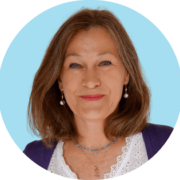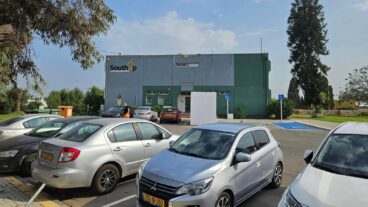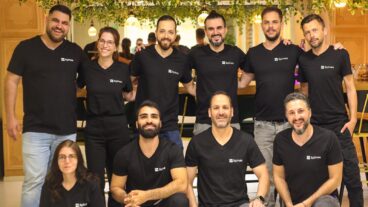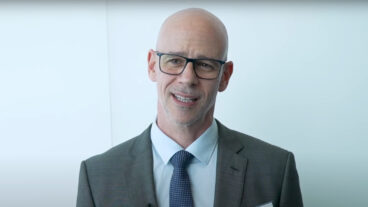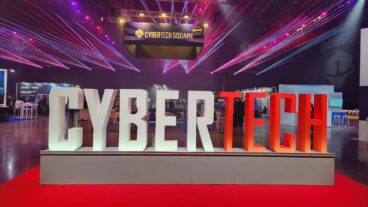Startup e-magin is aiming its erasable ink technology initially at the $7.5 billion outdoor billboard market.Imagine being able to touch a button on the side of a blank page of flexible paper-like plastic and see your newspaper appear on it suddenly every morning. There would be no delivery hassle, no old newspapers piling up in the magazine rack. Instead you could make coffee, sit down in an armchair, and read a digital version of your newspaper in full color, enjoying the same comfortable look and feel as a paper version.
Sounds exciting, but hold off from calling your favorite publisher to request such an item just yet. The only way to read a digital newspaper is still on the computer. While a hard-copy digital newspaper might not yet be available, the technology that can create it is, and it brings with it a host of interesting and potentially lucrative opportunities.
Israeli startup e-magin, a spin-off of Jerusalem-based holding company SixEye Group, has developed what it describes as a reflective full-color electronic ink that can be used on sheets of thin electronic paper again and again. The electronic ink has the same quality as print, but changes can be made with a few keystrokes. Energy consumption is extremely low as the changes require no electronic or battery power.
“It looks like traditional ink, but instead of being stuck with the same image once it has been printed, you can change the image repeatedly on the same surface,” said Ran Poliakine, chief executive of SixEye and e-magin. “It’s like an ink that never dries. Whenever you want to change the image, you can send a message to the ink and it reorganizes itself into the new image.”
There are many applications, ranging from indoor and outdoor advertising to e-books. In the years ahead, Poliakine believes that such technology could even find its way to laptops. “One of the biggest problems with laptops is the battery lifetime. Digital ink gives you the capability of having a laptop without a battery,” he said.
The idea of “smart ink” is not particularly new. For the past 20 years, giants such as Xerox and E Ink Corp., a privately held company based in Massachusetts, have been exploring ways to combine the natural look and feel of printed paper images with the flexibility of digital devices. What makes e-magin stand out, however, is that the company has managed to develop a full-color application that uses reflective technology to enable users to view the electronic ink anywhere – even on a sunny street.
The only problem with developing such a technology is that it is essential to define a niche in which the company can dominate. As a result, e-magin, which was founded in March 2000, has decided to focus initially on one main market – billboard advertising.
Billboard advertising has remained relatively unchanged for years. A company buys a slot and prints an ad. The only way to put the ad up, or to take it down, is manually – a time-consuming and expensive process.
Using e-magin’s technology, customers can cut out the printing process and the labor costs. Instead, the advertisements, which look much like ads printed on paper, can be changed digitally from one central location whenever required. Advertisers don’t even have to limit themselves to one picture each time. Say it’s an ad for women’s clothing. In the morning the model might be wearing a suit. In the evening she can be displayed wearing an evening gown.
The new digital billboards, which are now being tested in Europe, Canada and the United States, combine both software and hardware elements. A standard billboard, which is about three meters by four meters, will cost $60,000 when it finally goes on sale in the third quarter of 2002, while the software will cost advertisers a few thousand dollars every quarter. This compares favorably with competing LCD systems, which can cost up to $500,000 for the hardware alone.
There is a large potential market for digital billboards. Every year advertising and media companies spend $266 billion on advertising. Of this, outdoor advertising takes a $15 billion share, and the sector is growing by 5 to 7 percent every year.
In the outdoor market, billboards make up the largest segment, accounting for 48 percent of all sales. That’s an annual market of close to $7.5 billion.
David Coates, a scientist who previously worked for pharmaceutical giant Merck, and Amir Ben-Shalom, a former graduate from Talpiot, developed the technology behind e-magin. They began working on the idea in 1998 and once it became clear that the technology worked, SixEye spun it off to create e-magin, which now employs 25 people, most of whom are scientists or engineers. The technology, which incorporates micro-electronics, electro-optics, software and chemistry, is protected by numerous patents.
E-magin has already identified its key customers and is actively courting them. Over the past five years, a wave of consolidations has taken place and today the billboard market is dominated by about 10 major players including Viacom, America Online, Clear Channel, JC Decatur of France and Great Britain’s Maiden.
These conglomerates control about 80 to 90 percent of the $7.5 billion market.
“It’s not like going after 2,000 customers,” Poliakine said. “We’ve met their technical people and their engineers and are creating a long-term relationship with them. This will be a key factor in our ability to penetrate the market. One of e-magin’s main ambitions is to position the digital billboard as a market standard. You see a lot of technologies that are very nice but they aren’t successful because they don’t work with the client to standardize the technology.”
Once this new segment is working, the company will explore two other significant market applications. The first is e-paper – products like the newspaper described above. The second is wrap-around advertising, which can be used to cover a building, or a bus, or other large objects.
“Our mission is simple. We want to be strong in technology. Whenever we identify specific markets we plan to join forces with one of the big giants in this sector,” Poliakine said. “If we develop a technology that is good for the PDA, then we will talk to Sony. If we develop a technology that is suitable for publishing, then we’ll go and talk to a big publisher and take it on as our strategic partner.”




